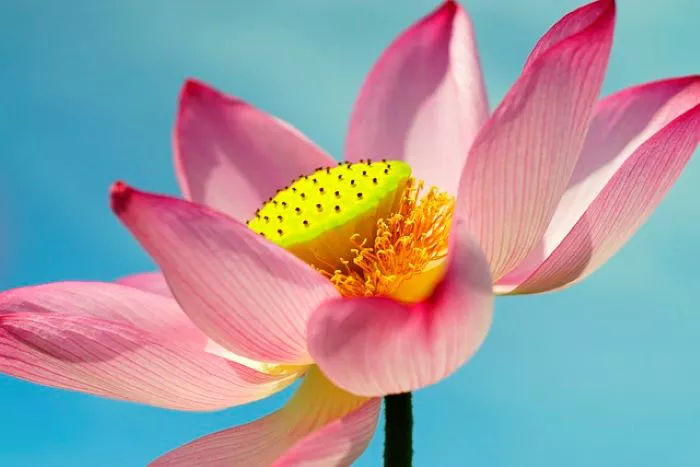Passion flower, scientifically known as Passiflora, is a stunning plant known for its intricate flowers and delicious fruit. Many gardeners and plant enthusiasts are interested in propagating passion flowers from seeds. This article provides a detailed guide on how to collect and prepare seeds from passion flowers, ensuring successful germination and growth.
Understanding Passion Flower
Passion flowers are native to tropical and subtropical regions of the Americas. They are known for their unique and colorful blossoms, which attract pollinators such as bees and butterflies. The fruit produced by some species, particularly Passiflora edulis, is edible and commonly referred to as passion fruit. Collecting seeds from passion flowers allows gardeners to propagate new plants and enjoy the beauty and benefits of this remarkable species.
Identifying Seed-Ready Fruits
The first step in collecting seeds from a passion flower is to identify when the fruit is ready for harvest. Passion fruit develops from the flowers and takes several weeks to ripen.
Ripeness: Look for fruits that have changed color from green to a deep yellow or purple, depending on the species. The skin should be slightly wrinkled, indicating that the fruit is ripe. Ripe fruits will also feel slightly soft to the touch.
Timing: The ideal time to harvest passion fruit is during the late summer to early fall, depending on your climate. Monitor the fruits regularly to catch them at their peak ripeness.
Harvesting the Fruit
Once you have identified ripe passion fruits, it is time to harvest them. Proper harvesting techniques ensure that the seeds remain viable for planting.
Cutting the Fruit: Use clean, sharp scissors or pruning shears to cut the fruit from the vine. Avoid pulling the fruit, as this can damage the plant and affect future growth.
Handling: Handle the harvested fruits gently to avoid bruising. Place them in a basket or container to prevent damage during transport.
Extracting the Seeds
After harvesting the fruit, the next step is to extract the seeds. This process involves removing the pulp and separating the seeds.
Cutting Open the Fruit: Use a knife to slice the ripe passion fruit in half. Be careful to cut through the skin and pulp without damaging the seeds inside.
Scooping Out the Pulp: Use a spoon to scoop out the gelatinous pulp and seeds from each half of the fruit. Place the pulp in a bowl or container.
Cleaning the Seeds
Cleaning the seeds is an essential step to ensure successful germination. The pulp surrounding the seeds contains substances that can inhibit germination if not removed.
Rinsing: Place the pulp and seeds in a fine mesh strainer or sieve. Rinse them under cool running water to remove the gelatinous coating. Gently rub the seeds with your fingers to help separate them from the pulp.
Soaking: If necessary, soak the seeds in water for 24 hours to help loosen any remaining pulp. After soaking, rinse the seeds again to ensure they are clean.
Drying the Seeds
Once the seeds are clean, they need to be dried before storage. Proper drying prevents mold and ensures the seeds remain viable.
Spreading Out: Spread the cleaned seeds on a paper towel or a clean, dry surface in a single layer. Avoid overlapping the seeds to ensure even drying.
Drying Time: Allow the seeds to air dry for several days in a cool, dark place. Check them periodically to ensure they are drying evenly. The seeds should be completely dry before storage.
Storing the Seeds
Proper storage of passion flower seeds is crucial for maintaining their viability. Follow these guidelines to store your seeds effectively.
Containers: Use airtight containers, such as glass jars or plastic bags, to store the dried seeds. Label the containers with the date and species for future reference.
Storage Conditions: Store the containers in a cool, dark, and dry place. A refrigerator can be an excellent option for long-term storage, as it helps maintain a stable temperature and humidity level.
Germinating the Seeds
When you are ready to plant the seeds, follow these steps for successful germination.
Soaking: Soak the seeds in water for 24 hours before planting. This helps to soften the seed coat and promotes germination.
Planting: Fill seed trays or pots with a well-draining seed-starting mix. Plant the seeds about 1/4 inch deep in the soil. Water the soil gently to ensure it is moist but not waterlogged.
Temperature and Light: Place the trays or pots in a warm location with indirect sunlight. Passion flower seeds germinate best at temperatures between 70°F and 85°F (21°C to 29°C).
Watering: Keep the soil consistently moist during the germination process. Be careful not to overwater, as this can lead to rot.
Transplanting Seedlings
Once the seeds have germinated and the seedlings have developed a few sets of true leaves, they can be transplanted into larger pots or directly into the garden.
Timing: Wait until the seedlings are about 3 to 4 inches tall before transplanting. This ensures they are strong enough to handle the transition.
Transplanting: Carefully remove the seedlings from their trays or pots, taking care not to damage the roots. Plant them in prepared garden beds or larger pots, ensuring they have adequate space to grow.
Conclusion
Collecting seeds from passion flowers is a rewarding process that allows you to propagate new plants and enjoy their beauty and benefits. By following the steps outlined in this article, you can successfully harvest, extract, clean, dry, and store passion flower seeds. With proper care, you can grow your own passion flowers and even enjoy the delicious fruits they produce. Whether you are a seasoned gardener or a beginner, growing passion flowers from seeds is an enriching experience.


